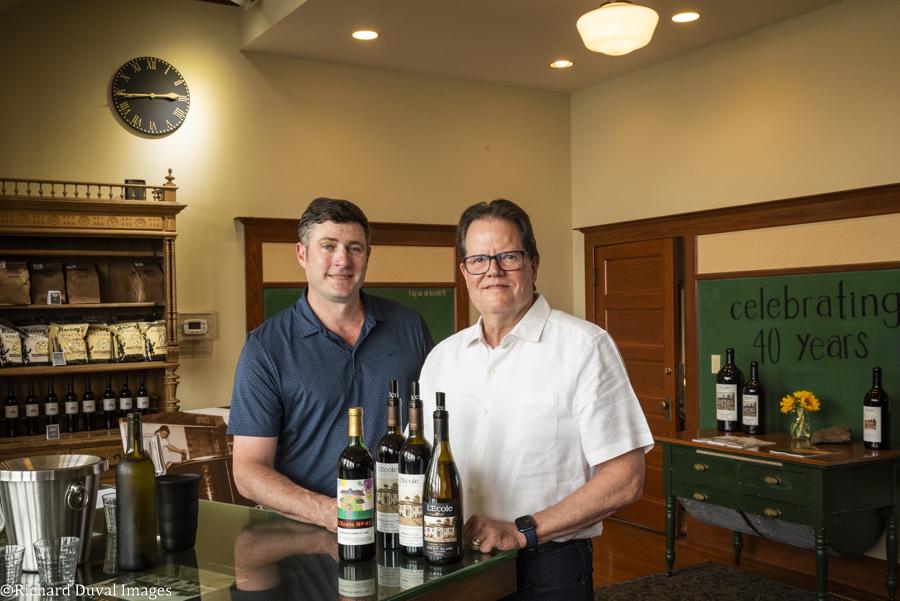
LOWDEN, Wash. — As L’Ecole N° 41 Winery commemorates its 40th anniversary, owner Marty Clubb and winemaker Marcus Rafanelli invited Great Northwest Wine to taste the winery’s history via select landmark wines that proved key to the winery’s success.
Each section features comments by Clubb and Rafanelli on the significance of the wine, some notes for the wine nerdy, and ends with a tasting evaluation by Great Northwest Wine editor Eric Degerman.
Editor’s note: Prices listed are when the wine was released.
L’Ecole N° 41 Winery 1983 Merlot, Washington, $15
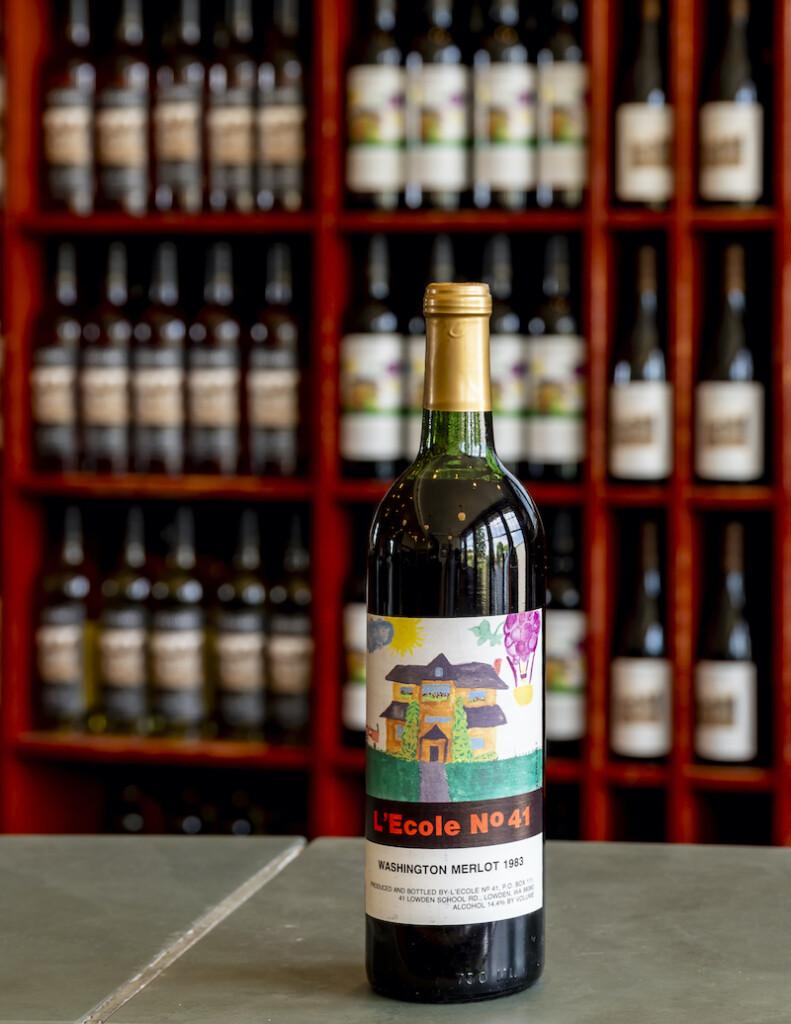
Four decades ago, Maury Balcom’s vineyard north of Pasco, Wash., stood as one of the Northwest’s top sites for Merlot and an early favorite of L’Ecole.
The 1983 Merlot bottling reportedly received the only gold medal awarded at the Enological Society of the Pacific Northwest judging. That panel featured two of the wine world’s foremost figures — Italian vintner Angelo Gaja and Napa Valley’s Warren Winiarski of Stag’s Leap Wine Cellars.
Owners Baker and Jean Ferguson (who also was L’Ecole’s first winemaker) wisely hired one of Washington state’s most experienced winemakers to lend some expertise.
Marty Clubb: “Kay Simon had left Ste. Michelle earlier that year. She was the consulting winemaker in that first year to LʼEcole — so two women winemakers collaborated on our first vintage.
“Jean and Baker intentionally were going for structure behind the Merlot. They did extended maceration and probably made the wines a little tight when they were young because they wanted the wines to age. In not too much time, they really popped.”
Marcus Rafanelli: “I think this wine is still telling its story. I liken old wines to textbooks. If you want to know history, you need to try these benchmark wines, and this is one. Just like the ’88 Columbia Winery Red Willow (Vineyard) Syrah — the first Syrah from Washington. Thatʼs the only wine thatʼs ever made me cry.ˮ
MC: “After Baker passed away, we celebrated him at our house with friends, and we thought, ‘We need to serve the ʼ83 Merlot.’ That was in 2005, and I was so surprised with how well the wine was showing at that point. Now we’re enjoying again 18 years later.
“Merlot was two-thirds of our production throughout the Eighties, and it remained our leading wine and variety through the Nineties. Merlot was on the cover of Wine Spectator and people were trying to project, ‘What variety will Washington state be known for?’ We all thought it was going to be Merlot.”
Nerd notes: Harvest was Oct. 8 at 24 Brix, with a pH of 3.45 and total acidity of 9.0 grams per liter — a level of TA often seen in whites. L’Ecole bottled 600 cases from a barrel program of 100% new French oak, which Clubb points out was quite common then. The alcohol by volume was 14.4%. There’s no reference to sulfites on the bottle, and the Columbia Valley American Viticultural Area wasn’t established until 1984.
GNW: There’s a remarkable Bing cherry note that threads through many of the modern-day L’Ecole reds, and it’s quite alive in this Merlot that’s still got some bones. The level of “bottle bouquet” — dried fruit and saddle leather — isn’t as prevalent as one would expect. Its structure is dynamic and refreshing rather than tired or tannic.
L’Ecole N° 41 Winery 1993 Pepper Bridge Vineyard Apogee Red Wine, Walla Walla Valley, $28
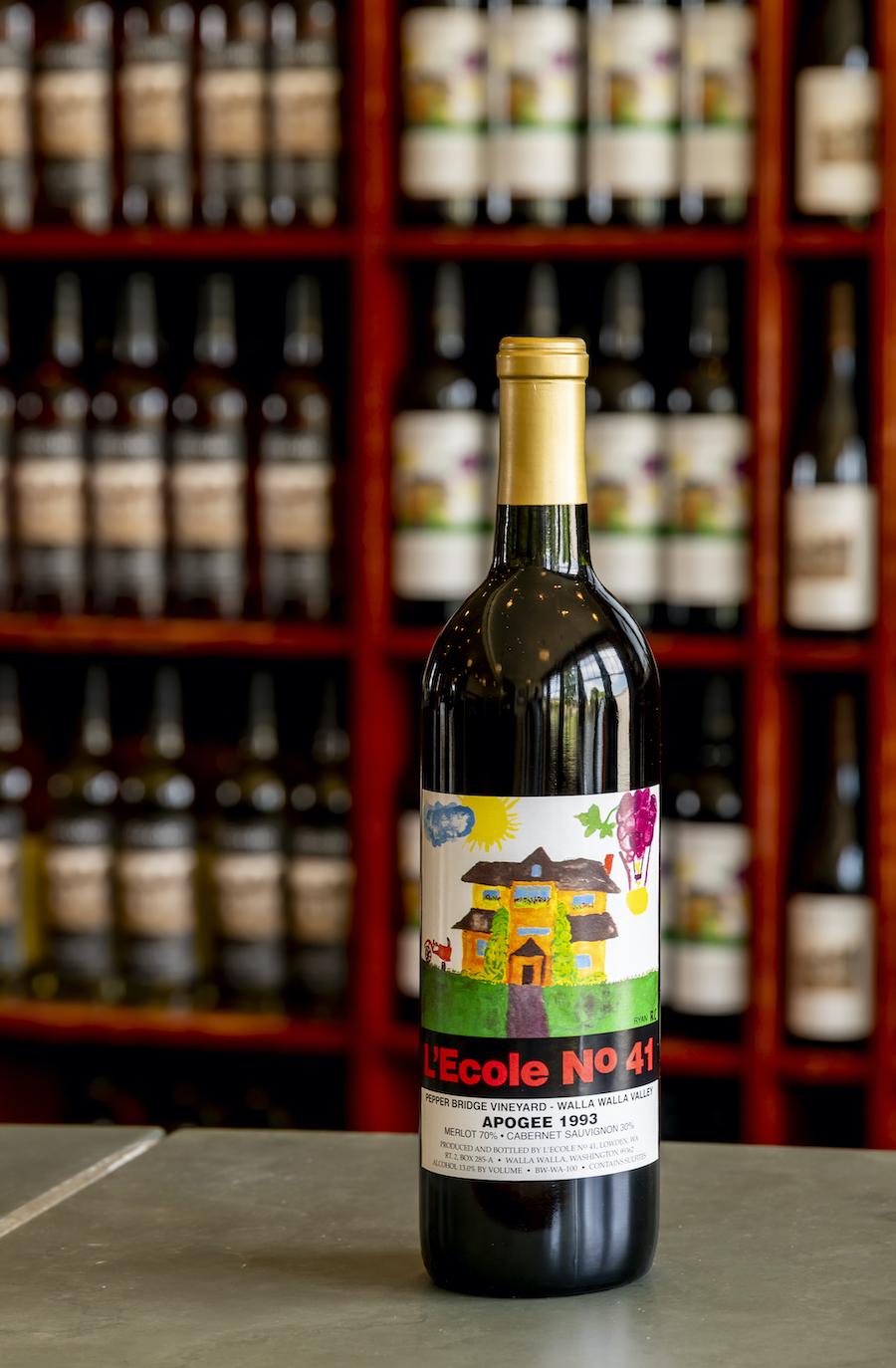
A straightforward Right Bank-Bordeaux blend of Merlot (70%) and Cabernet Sauvignon (30%), this marked the first vintage of Apogee — a proprietary name credited to Baker Ferguson. This cast an early spotlight on Norm McKibben’s vision and flashed his background as an engineer with his technological innovations for viticulture.
MC: “That same year we made a Seven Hills Vineyard Merlot. For us, that was important because we now had fruit in Walla Walla. It put us on the pathway of developing vineyards in Walla Walla.”
The ’93 vintage proved to be a cool vintage, and the first terroir-driven red blend has outlived the projections on the tech sheet, which noted that it should continue to age well through 2005.
MR: “Let’s put a ‘2’ in there over the second zero.”
MC: “Wait a minute — I’ve got an eraser here.”
MC: “Sometimes the Pepper Bridge wines in their youth can be slightly austere and closed. When we’re barrel tasting, we’d always show Seven Hills because it has the more elegant and perfumy approach. Once it was in the bottle, the Pepper Bridge wines would start to build.”
MR: “The acidity helps carry the wine across the palate, and it hits the sides of the palate, which is where midpalate on older wines can be lacking. Itʼs nice to have that initial attack that carries through. And again, it has that beautiful finish.”
Nerd notes: The Merlot came off Oct. 7 at 23.7 Brix with a pH of 3.44. The Cabernet Sauvignon was a month later — Nov. 9 — at only 21.5 Brix and a lofty pH of 3.83. Production was 167 cases, and it was released on July 19, 1995. The finishing chemistry was pH of 3.66 and TA of 6.6 g/L, with listed alcohol by volume of 13%. Its barrel program was 70% French/30% American oak. The barrels were racked four times and bottled without being fined or filtered.
GNW: I taste a depth to the cherry throughout, and Pepper Bridge is a cooler, late-ripening site influenced by the afternoon breezes that sail down the Blue Mountain foothills. It’s simply a remarkably delicious red that continues to offer dark Bing cherry and a sense of celery-influenced Old Bay spice.
L’Ecole N° 41 Winery 1995 Windrow Vineyard Cabernet Sauvignon, Walla Walla Valley, $25
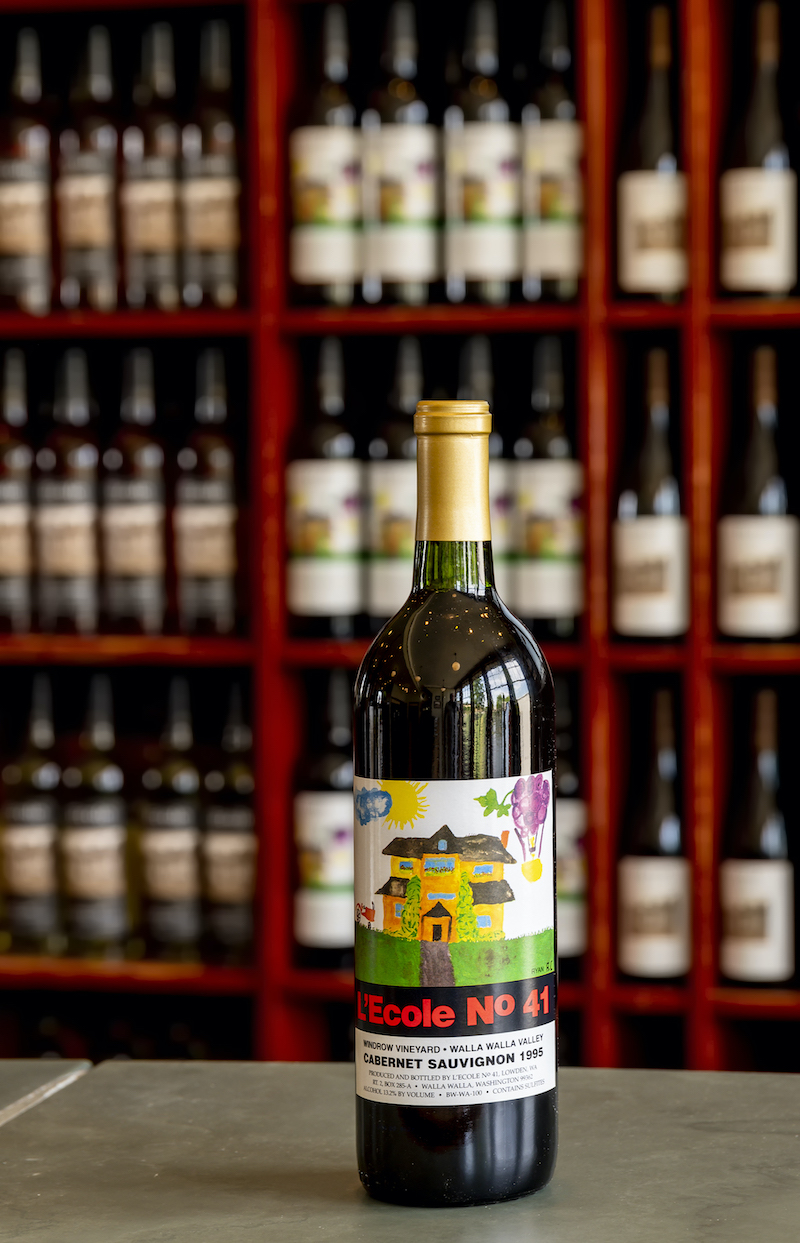
This marked the third series of vineyard-designated wines by L’Ecole, and it represents a 7-acre block of Cabernet Sauvignon adjacent to Seven Hills Vineyard that’s produced many of the Walla Walla Valley’s best Cabs.
L’Ecole didn’t begin bottling a Cab until 1989 — the year Clubb took over management of the winery — and this ’95 was L’Ecole’s first standalone Cab from the Walla Walla Valley.
MC: “Norm McKibben bought Seven Hills in 1992, but the Hendricks family kept that block and renamed it Windrow. This was the first Walla Walla Cabernet we bottled. We make about 2,000 cases of Walla Walla Valley Cabernet, and it’s sold across the country.
“This has a bit of an herbal note to it. If you leave the grapes hanging long enough, you can burn through pyrazines, and it becomes more sage and spice. We see a lot of that spice/herb note in our Walla Walla Cabs over time.”
MR: “I want the bottle to be 10 times larger. For aged Cabernet from Walla Walla, this is amazing.”
Nerd notes: Crafted from 5.9 tons of grapes that came in at 23 Brix on Oct. 14 with a pH of 3.7 and TA of 6.3. The bottling of 354 cases represents about 14 barrels in an oak program similar to the Apogee, featuring cooperages Seguin Moreau and Tonnellerie Francaise. Much like the Apogee, the wine was racked four times, then bottled without being fined or filtered. This wine was released during the 1997 holiday season, with the alcohol at 13.2%.
GNW: There’s a bit of seduction here with its persistence and penetration of sweet dark red fruit, Baker’s chocolate and a bit of peach skin in the nose and on the finish. It’s now a bottle that exemplifies why wine lovers build cellars.
L’Ecole N° 41 Winery 2002 Seven Hills Vineyard Estate Perigee, Walla Walla Valley, $35
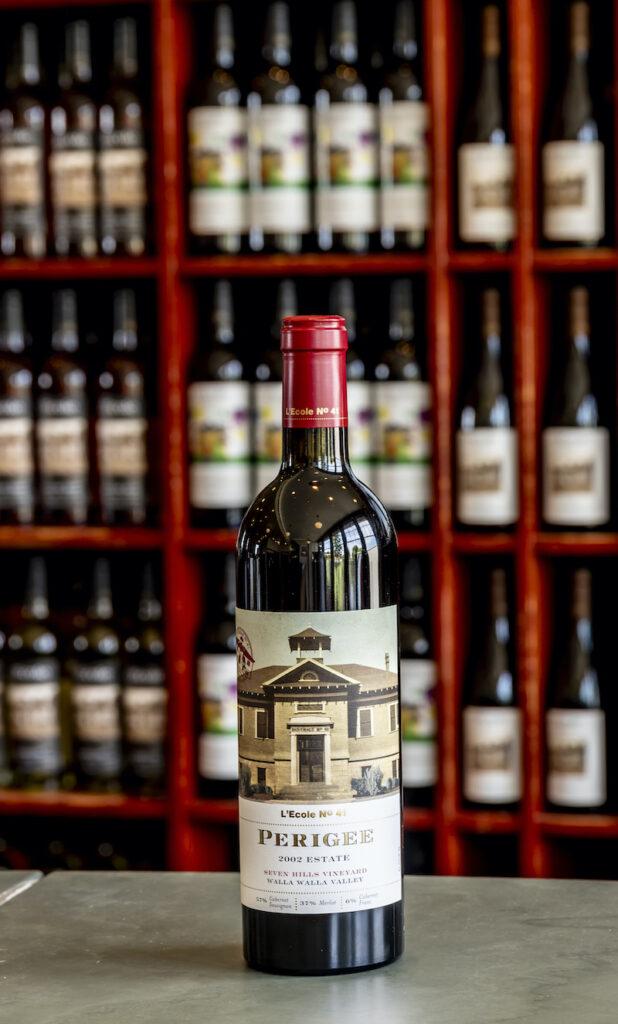
The long-lasting charm of the ’95 Windrow Cab made it easy to believe that L’Ecole’s first Left Bank Bordeaux expression from Seven Hills would continue singing 20 years later.
Named for the closest point to the Earth in the moon’s orbit, Clubb’s blend of Cabernet Sauvignon (57%), Merlot (37%) and Cabernet Franc was released in December 2004. As a warmer site than Pepper Bridge, this Perigee set the standard of early approachability tasting of earthiness, which Clubb credits to the complex, wind-blown loess soils of Seven Hills.
MR: “It looks like it was a pretty warm year if you were pulling in Cabernet Sauvignon on Sept. 19.”
MC: “That texture from Seven Hills — those pretty, silky and velvety notes — we knew we could easily over-oak this wine. So weʼve always been a bit more measured on our wood with Seven Hills. There’s that cedary note and that black cherry.”
MR: “It carries much of the same characteristics as the ’22 we just blended a couple of weeks ago.”
MC: “A lot of wines that are soft and silky and easy-drinking will fall on their face after about five years. You can fine your wine with egg whites which makes them softer, aromatic and pretty, and easy drinking to get the score, but the wine doesnʼt hold up.”
Nerd notes: History looks upon 2002 as a rather typical vintage without fear of drought conditions. Merlot came in on Sept. 3 at 24.2 Brix. Cab Franc was Sept. 13 at 24.7 Brix, and the Cab Sauvignon on Sept. 19 at 25.1 Brix. The barrel program was 60% new oak for 22 months, and the barrels were racked five times. Production resulted in 1,160 cases of unfined and unfiltered wine.
GNW: Within this tasting of history, this was the first bottle to tease out some oak tones, a sign of its time in barrel for 22 months with 60% new wood.
L’Ecole N° 41 Winery 2004 FERGUSON Commemorative Reserve Red Wine, Columbia Valley, $45
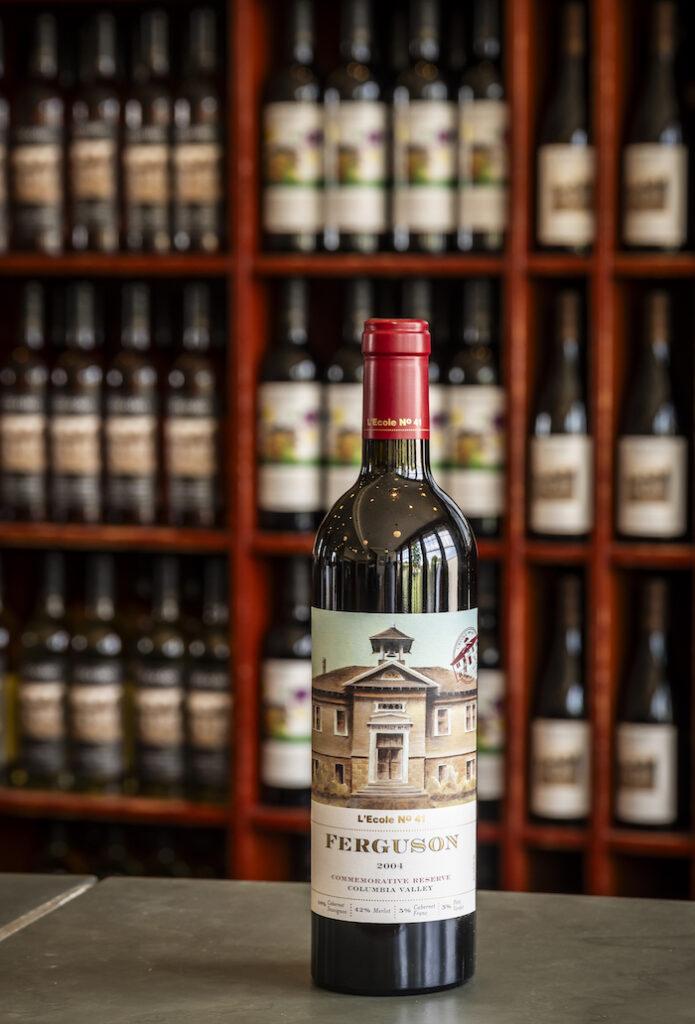
Clubb and his team cherry-picked from four of Washington state’s premier vineyards to create this tribute, released in December 2006 — a few months after Baker Ferguson’s passing. (Spouse Jean, the founding winemaker, died in 1998).
In 1983, the Fergusons ranked among the first customers of Klipsun, Bacchus and Dionysus vineyards. Those three plantings form two-thirds of this blend — Cabernet Sauvignon (48%), Merlot (42%), Cabernet Franc (5%) and Petit Verdot. Weinbau and StoneTree also played roles in this 1,800-case project.
In terms of the vintage, 2004 didn’t suffer as much widespread winter damage as 1996, but it was a major concern. Growers retained more buds than usual on the vines to increase their chances of viability at bud break. Canopy management was more time-consuming in order to get clusters to the finish line. It turns out they had plenty of time to ripen.
MC: “It was another example of how the industry comes together when there are down years.”
MR: “This is super fresh – a very vibrant wine.”
MC: “It’s the steppingstone for what we would create in Ferguson. Next year, it will be a 20-year-old wine, and it’s got a lot of life left.”
Nerd notes: On average, the Cabernet Sauvignon for this wine was harvested Sept. 27-29 at 25.2 Brix. The Petit Verdot hit 27.3 Brix by Sept. 29. The last grapes in were Cab Franc on Oct. 4.
GNW: The power and grip historically linked to Klipsun is undeniable, yet there’s an abundance of fruit to support those tannins with cherry jam preserves and plum joined by lavender, cedar and sage. The 22 months in 50% new oak are sublimely integrated at this point. It merited 92 points from Wine Enthusiast reviewer Paul Gregutt.
L’Ecole N° 41 Winery 2011 Estate Ferguson Red Wine, Walla Walla Valley, $60
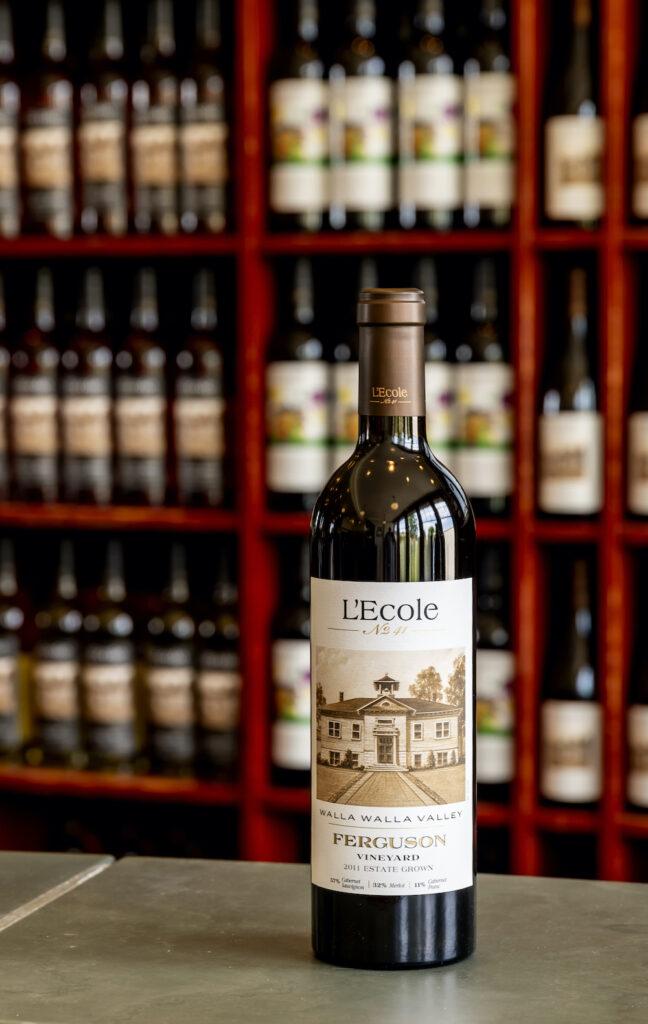
Many in the Northwest wine industry remember 2011 as the last of the “cool” vintages.
Growers sought different paths to offset the chilly La Niña 2010 and 2011 growing seasons. Learned vineyard managers Paul Champoux and Mike Sauer played around with Marquette — a red variety developed at the University of Minnesota as a grape that can withstand colder temperatures.
That backdrop makes it even more remarkable that this wine won Best Bordeaux Blend at the 2014 Decanter World Wine Awards. Soon after the judging, Clubb did know this wine earned at least a gold medal, which explains why Decanter encouraged him to be in London for the awards ceremony.
MC: “I was overwhelmed, nearly crying. It was really stupendous. There were microphones in my face, but all I could think of was to call the winery and let them know — only they had gone online and saw the results. Everybody was celebrating.
“This was the first wine we made from Ferguson, and I’m convinced the judges thought it had to be French. But it was from Walla Walla!”
MR: “I love this wine. It’s 12 years old, but it could have been released yesterday. It’s got the tannin structure of Ferguson — very linear down the midpalate, with nice red fruit all the way through.”
Nerd notes: Harvest for this wine began Oct. 13 and ended Oct. 28. There were 845 cases produced after spending 22 months in 50% new barrels, which were racked five times.
GNW: The Great Northwest Wine panel evaluated this in 2014, and the barrel notes in Left Bank Bordeaux-styled blend of Cabernet Sauvignon (57%), Merlot (32%) and Cabernet Franc are now moved into the background, leaving classic notes of dark purple fruit akin to black cherry, black currant and plum. There’s still Marionberry juice, earthiness and those flecks of iron that are thumbprints of Ferguson vines in the fractured basalt.
(The 2013 Estate Ferguson went on to win the International Trophy for the Best New World Bordeaux Blend at the 2016 Six Nations Wine Challenge in Australia.)
L’Ecole N° 41 Winery 2019 Seven Hills Vineyard Estate Perigee, Walla Walla Valley, $57
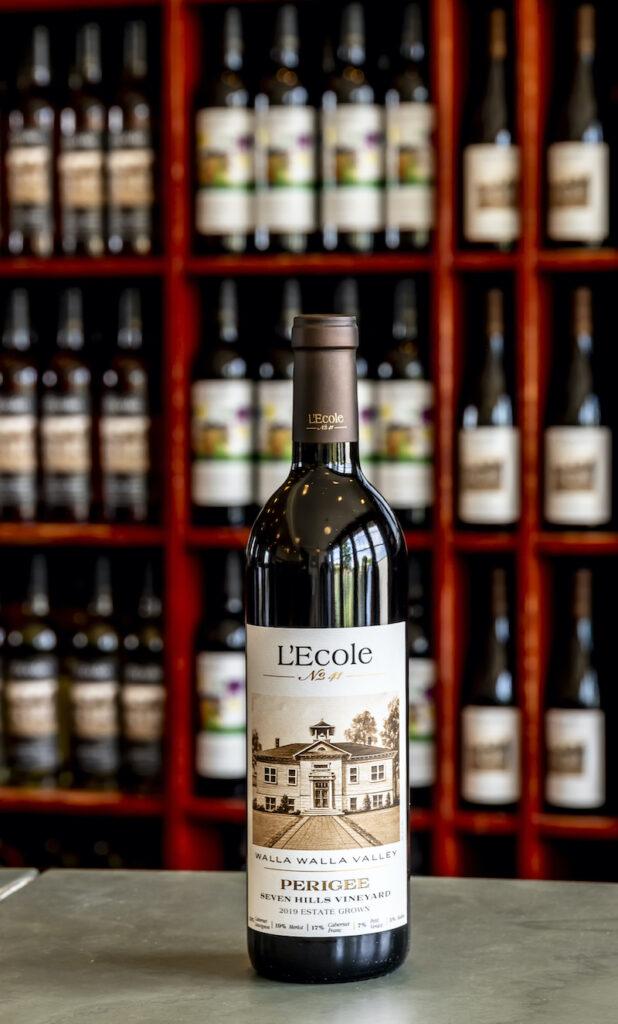
What was the Six Nations judging in Australia is now the Global Fine Wine Challenge, and L’Ecole used this Left Bank-inspired entry to win the Bordeaux Blends Trophy in 2022 — the winery’s third major international award in 10 years.
After a year in bottle, it was released in fall 2022. And its 1,010 cases were gone not long after its win Down Under at the judging by several Masters of Wine. Its entry came via Seattle-based writer Sean Sullivan, who nominated 100 wines from the U.S. to compete with those from the other five nations.
MC: “It was a little cooler vintage, so there’s higher natural acidity, but the approachable character of Seven Hills pops in the glass almost immediately. And it’s got all five of the major Bordeaux varieties, so that broadens the palate.”
MR: “The oak character will break down over time. Those toast levels add vanilla, coconut and baking spice — notes that barrel aging can give. It’s important not to overpower the wine, but to build the wine.”
Nerd notes: Cabernet Sauvignon (52%) leads Merlot (19%), Cabernet Franc (17%), Petit Verdot (7%) and Malbec, so the harvest for this blend spanned Sept. 17 through Oct. 18.
GNW: It’s stylish with ripe bramble berries, black currant, sweet herbs and a seductive influence of barrel.
L’Ecole N° 41 Winery 2020 40th Anniversary Red Wine, Walla Walla Valley, $50
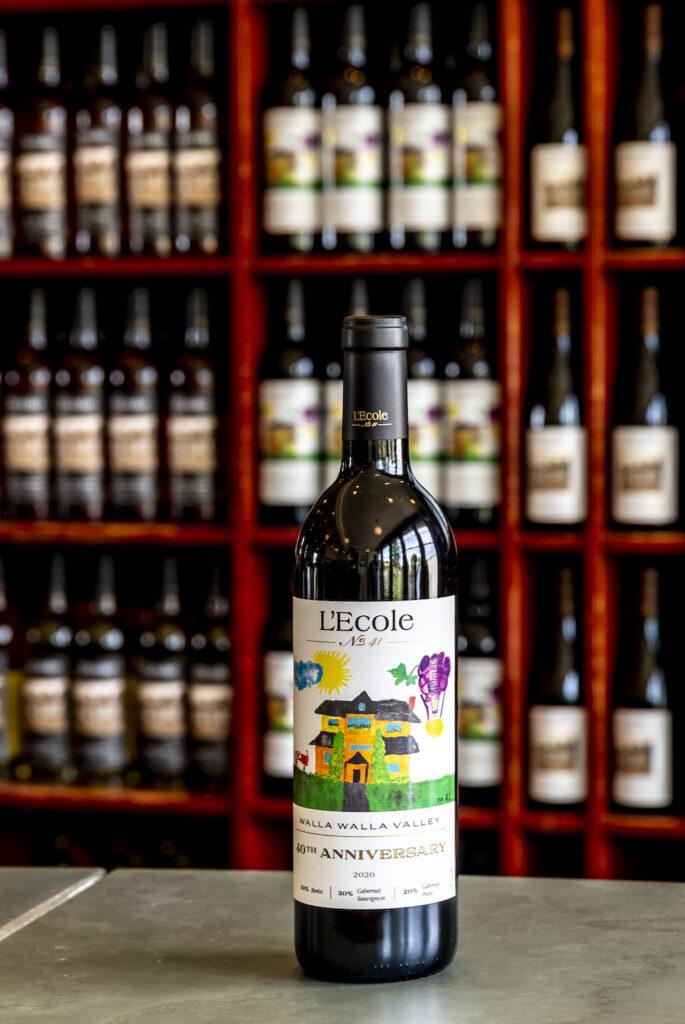
Here’s a throwback jersey on a blend of the two Walla Walla Valley vineyards that helped define the future of L’Ecole as the label marks the one-time return of the child’s drawing.
MC: “A million people must have asked when we were going to use the old label. The more we thought about it, we decided to take a step back to the wines we were making in the beginning — Right Bank style, which means more Merlot-based.”
Nerd notes: Seven Hills makes up 60% of the blend with Pepper Bridge, and it’s a rather straight-forward composition of Merlot (50%), Cabernet Sauvignon (30%) and Cabernet Franc. L’Ecole produced 1,200 cases, and the bottles were released just a few weeks ago.
GNW: This also reflects the first crush for Rafanelli as the winemaker at L’Ecole, and his influence in the cellar gave this immediate approachability. Quintessential notes of Bing cherry, Marionberry and dusty herbs include sturdy plum-skin tannins, a burst of pomegranate acidity and finishing touches of roasted coffee, cocoa powder and fig. Based on its current profile and within the context of this tasting, it should be drinking well into the 2040s.
Click here to learn more about this wine.
L’Ecole N° 41 Winery 2022 Seven Hills Vineyard Estate Luminesce, Walla Walla Valley, $25
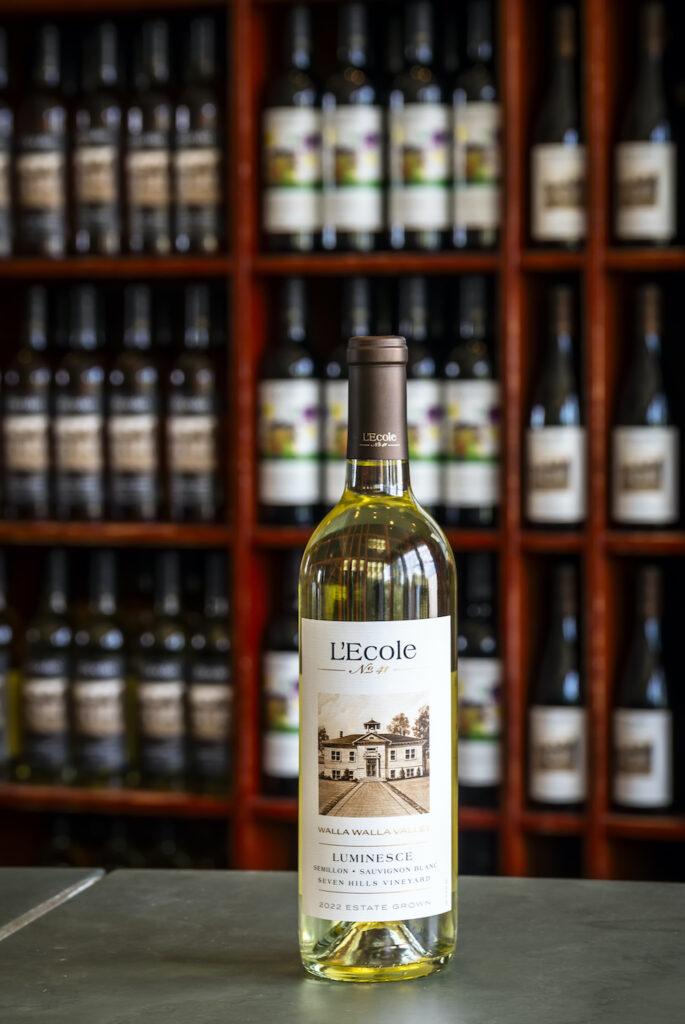
Jean and Baker Ferguson’s first bottled wine was a Sémillon, and they loved white Bordeaux, which explains why Clubb made certain L’Ecole N° 41 is a Northwest leader for blending Sémillon (60%) and Sauvignon Blanc (40%). And his team does so with varieties not on the tip of the tongue in terms of grape growing in the Walla Walla Valley.
MC: “This is the only white wine we make from Walla Walla. We branched out into a broader blend of a Bordeaux, so itʼs still very much in a white Graves style. Itʼs barrel fermented (15% new French oak), and Marcus has played with a few yeasts to bring out some more aromatics in the wine.”
MR: “This is a fun wine, and I love its dichotomy — the aromatics of the Sauvignon Blanc and then it’s all Sémillon on the palate.”
Nerd notes: The 1,630 cases were released this summer.
GNW: The barrel influence is tied to the structure rather than distracting from gooseberry, peachy and melon overtones to the lemony crispness and finish of Key lime pie.
Click here to learn more about this wine.
L’Ecole N° 41 Winery 2022 Old Vines Chenin Blanc Yakima Valley, $19
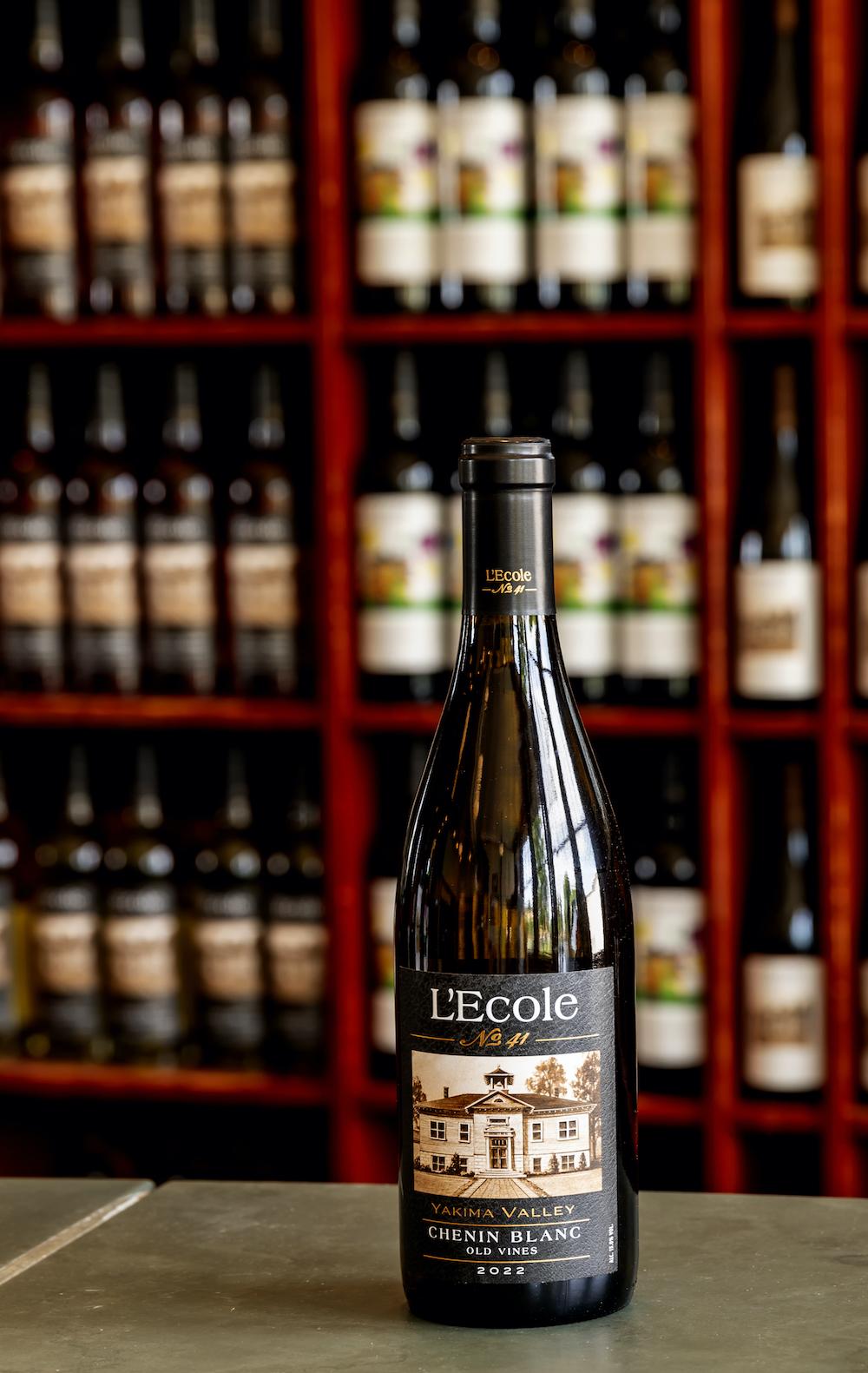
With this tip of the cap to the late Jean Ferguson, Clubb remains a champion for a grape that’s beyond the mainstream — Chenin Blanc. L’Ecole began its Vouvray-inspired crusade in 1987.
MC: “Old vine Chenin Blanc. That’s a little bit of a niche wine. I love Chardonnay, but there are a gazillion Chardonnay products on the shelf. Not many Old Vine Yakima Valley Chenin Blancs on the shelf.”
So Rafanelli and his fellow College Cellars alumni produce two bottlings featuring the Loire Valley variety that is more Mary Ann than Ginger. This is the flagship 5,300-case effort that’s the result of long-term partnerships with three Yakima Valley vineyards all established in 1979 — Upland, Willard Farms and Phil Church.
MC: “When we decided to go to a drier style with Chenin, we aggressively contracted with some of the older plantings in the state. We now have 60 to 70 percent of all the old vines in the state. Thereʼs only 70 acres of Chenin in the state and we’ve locked up about a quarter of it.”
Last year, the last Chenin Blanc grapes came into the Lowden schoolhouse on Nov. 2, leading to a wine that brings floral notes, minerality and citrusy acidity. Rafanelli, who has a culinary background, enjoys serving it with a slice of French toast that’s savory rather than sugary.
MR: “Get a nice, thick piece of challah and soak it overnight so that it’s custardy in the middle. Then bake it so that it still has that richness in the center.”
Vouvray from France has a significant following on the East Coast, where L’Ecole does well with Chenin Blanc in restaurants.
MC: “It’s priced and scaled to have national distribution, and glass-pour wines give wineries great visibility and brand recognition. Itʼs always a goal to have wines that are available in the best restaurants by the glass. And that’s one of the things that has helped put us on the map.”
That presence makes the economics and stress surrounding Chenin Blanc worth it.
MC: “From a viticultural side, it’s always the last thing picked. Cabernet typically is the last thing picked, but usually we’re picking Chenin even after Cabernet. It takes longer to get the fruit mature under our fall conditions, and we’re constantly on the lookout for sour rot, common in Chenin.
“So, we will often drop 10 to 15% of the fruit right before picking,” Clubb adds, “and these vineyards are really good at managing for that.”
GNW: Best Buy!

Leave a Reply